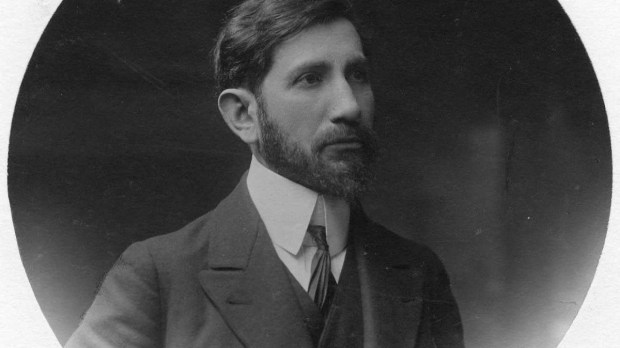Sometimes in our personal lives or society in general we see people who are spiritually adrift. We would like to see them discover the joy and truth of faith, which would help both them and those they influence. We pray for them, yet conversion seems no nearer than before. How long should we persist? The Carmelites of Lisieux can show us the way.
Condemned by the pope
In 1926, the far-right French nationalist and royalist political movement Action française was condemned by the Catholic Church. Charles Maurras, its leader (an atheist and anti-Semite), immediately sent a letter to Pope Pius XI. In terms highly respectful of the Holy Father, he asserted the “high idea of the Church” shared, in his opinion, by all members of his movement, and the “pain” he felt at his magazine’s being placed on the Index of prohibited publications. Indeed, Catholics were forbidden to read the Action française daily publication, at the risk of being deprived of the sacraments and religious funerals.
Pius XI did not reply to this long letter. He expected more than a simple act of respect. He demanded actual submission to the tenets of the faith from the Catholic members of Action française. He entrusted a special mission to the prioress of the Carmel de Lisieux, Mother Agnès of Jesus (none other than the elder sister of St. Thérèse of Lisieux). He asked that the Carmel de Lisieux should “pray every day” for these rebellious Catholics to find the path to obedience.
Mother Agnès of Jesus (Pauline Martin) had the inspiration that the solution to the problem lay in the conversion of Charles Maurras. She entrusted this important mission to Sr. Madeleine of St. Joseph, whose family history was closely linked to Maurras. Mother Agnès herself kept up a less frequent correspondence with the politician, more focused on the diplomatic objective with Rome.
An unexpected letter
On August 15, 1936, Sister Madeleine of St. Joseph of the Carmelite convent in Lisieux took up her pen to write to Charles Maurras. In this first letter, which inaugurated a correspondence spanning several hundred pages and 16 years, the nun spoke of the deep friendship between her own mother and Charles Maurras.
She also told him that her own sister, also a Carmelite nun at the Lisieux monastery, “went to heaven” on August 15, 1935, having prayed all her life for the salvation of Charles Maurras’ soul and for the unreserved adherence of his political movement to the directives of the Catholic Church.
Charles Maurras responded with great emotion. He wished to clear up the misunderstandings involved in Pope Pius XI’s condemnation of Action Française. Little did he know that the Carmelite convent would play a vital role in his dealings with the Vatican …
From political to spiritual battle
The battle began: a political one for Charles Maurras, who wanted to see the condemnation of Action Française lifted quickly; and a political and above all spiritual one for the Carmelite monastery in Lisieux. For the prioress, Mother Agnès of Jesus, it was necessary not only to work for peace between the Vatican and the Action Française, but above all for the salvation of Maurras’ soul.
Other sisters also joined the spiritual effort for Maurras’ conversion with all the ardor of the Carmelites, made of constant prayer and sacrifice (the offering of “little nothings,” a practice which Thérèse de Lisieux had passed on to her sisters). These were not only her sisters in religion, but also the actual flesh-and-blood sisters of St. Thérèse de Lisieux: Sr. Marie of the Sacred Heart (Marie) and Sr. Geneviève of the Holy Face (Céline).
In the course of their correspondence, Sister Madeleine of St. Joseph and Charles Maurras forged a deep bond. Maurras cherished strong feelings of admiration for the Carmelites, and immense veneration for the one he called “the little royal Saint of roses” (St. Thérèse of Lisieux).
He called the union of Carmelite sisters for his conversion “the Council of State of angels,” an expression that was to abound in his correspondence to express his affection for the sisters. Other signs of his attachment to Carmel: until his death, he wore the scapular of Mount Carmel and a first-class relic of St. Thérèse of Lisieux contained in a watch-shaped reliquary given to him by Mother Agnès of Jesus.
Seeking the light
Beyond his admiration for the Carmelite Order, Charles Maurras listened attentively to the advice of “his Council of State” to get closer to the Holy Father. In a way, he “obeyed” Sr. Madeleine of St. Joseph, writing letters to the Holy Father on special occasions, joining in novenas (even though Maurras wasn’t a believer!), or making pilgrimages to Lisieux.
He wished to be perfectly transparent with his correspondent, acknowledging that he still didn’t believe in God.
“I can’t say I see when I don’t see!” he’d say, or “I’m still looking for the light. I have to confess my uncertainty about the Truth.”
Sr. Madeleine replied, “To believe is to begin by not seeing, but to trust in someone whom we have reason to believe sees more clearly and further than we do… (…) Faith is not evidence. It does not presuppose it, nor does it exclude shadows, doubts of the mind, intellectual hesitations.”
Mother Agnès, for her part, told the Holy Father about all Charles Maurras’ happy “initiatives”: a pilgrimage to Lisieux, a Mass “he attended very worthily” at the Carmelite convent, or a quotation from Story of a Soul that Maurras had engraved on the ceremonial sword that was part of his uniform as a member of the Institute of France.
The Holy Father sometimes replied directly to Mother Agnès, or via a high-ranking Church official, as in this telegram sent by a cardinal: “The Holy Father has said: pray … pray … a lot for the well-known intention of Carmel.” And the Carmelite nuns replied: “We all pray for him every day with the deepest affection and the firm hope of being answered beyond our desires.”
“Long live the Carmel!”
Following a letter of submission to papal authority from Action Française leaders, Pope Pius XII finally lifted the ban on Action Française on July 15, 1939. Charles Maurras immediately wrote to the Carmelite convent in Lisieux: “So this awful nightmare is over, thanks to you, thanks to the angelic choir whose noble and constant thought I am wont to bless!” Other major events also contributed to turning the page: the war, the German occupation, the Vichy regime …
After the lifting of the Index, Charles Maurras continued to correspond with Sr. Madeleine, despite the difficulties of communicating during the Occupation. He ended one of his 1940 letters with a triple cry: “Long live France! Long live the Carmel! Long live the Roman Church!” He was drawn like a magnet to the faith of “his angels,” but still did not share it.
Final prayer
What happened between those years of doubt, and even, in his own words, of “darkness,” and his sincere deathbed conversion, reported by the priest who gave him the Last Sacraments?
Probably a “leap of faith,” to use the expression of the Danish philosopher Kierkegaard, and we might add “of trust,” from a Theresian perspective.
Suffering increasingly from deafness, Charles Maurras uttered these mysterious last words: “For the first time, I hear someone coming.” He died two days after the great feast of all the saints of the Carmelite Order, on November 16, 1952.
Charles Maurras took many secrets with him. History records him as an eminently complex character, a virulent anti-Semite and xenophobe. A “prisoner of his hatreds,” to quote journalist Nicolas Balique, he also lived in some measure, thanks to Carmel, a path of light … “Hope does not disappoint us,” says the Apostle Paul (Romans 5:5). A few days before his death, Charles Maurras wrote a magnificent poem entitled “Prière de la fin” (“Prayer of the end”). Here are the opening lines:
Lord, put me to sleep in your sure peace
In the arms of Hope and Love.
References:
Un chemin de conversion : correspondance choisie entre Charles Maurras et deux carmélites de Lisieux, 1936-1952 compiled by Xavier Michaux, Pierre TEQUI editor, 2022, 481 pages.
« Le Saint Siège et l’action française, retour sur une condamnation », in Revue française d’histoire des idées politiques, Emile Poulat, 2010/1 (N°31), pages 141 to 159.



